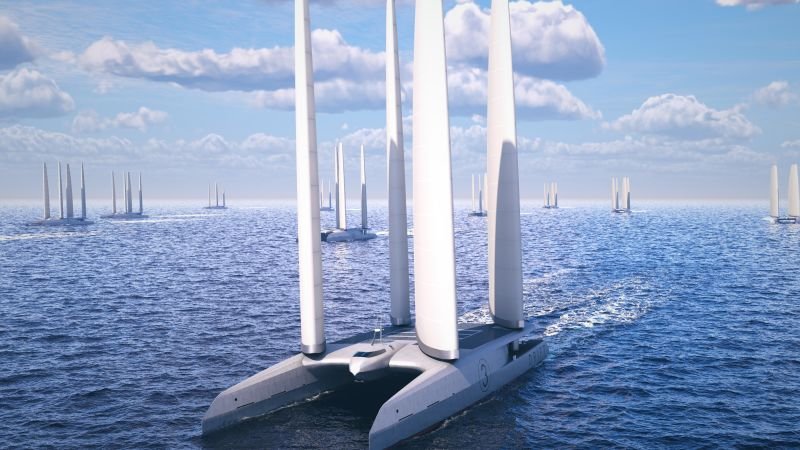

Wind turbines are more efficient than solar panels — they harness, on average, about 50% of the energy that goes through them compared to about 20% for solar — but are more dependent on location. Offshore turbines benefit from stronger winds and are more efficient than those on land, but they are also more expensive to build and maintain.
In the UK, where wind power generation in 2024 was the largest energy source for the first time, a startup called Drift is looking to extract even more power from offshore wind by effectively chasing after it — in a racing yacht
We make renewable energy in the ocean using sailboats, and deliver that energy to ports across the globe,” says Drift’s founder and CEO Ben Medland. Drift has built two prototypes, just over 17 feet (5 meters) in length and first demonstrated them in 2022 at the Sail GP sailing league in Plymouth harbor in the UK.
The high-performance catamarans are equipped with hydrofoils that lift them out of the water as well as an underwater turbine, which looks like a propeller but works in the opposite way, by capturing energy as the vessel sails through the water. That renewable energy is fed to a device called an electrolyzer, which converts seawater into hydrogen gas and stores it aboard, ready to be offloaded. It can then be used as a clean fuel to power industrial processes or for cars, planes and ships.
“This is a first-ever class of mobile renewable energy,” Medland continues. “It doesn’t need grid infrastructure. It doesn’t need cables under the ocean. It doesn’t need foundations or anchors or anything like that. These are, if you will, ‘free range’ wind turbines.”
One key component in Drift’s technology is an algorithm that hunts for what Medland calls “Goldilock conditions” — wind that is strong enough to generate energy without being dangerous: “The Goldilocks algorithm sails 6 million virtual miles in 0.02 seconds to choose the next mile of optimized route — that kind of data wasn’t available just 10, 15 years ago,” he says. “When you add all of that together (with the onboard technology), you’ve got what’s effectively a fishing boat for energy.”